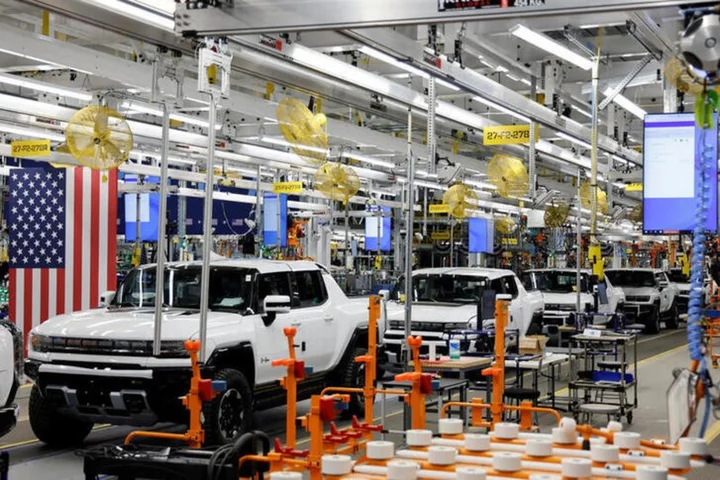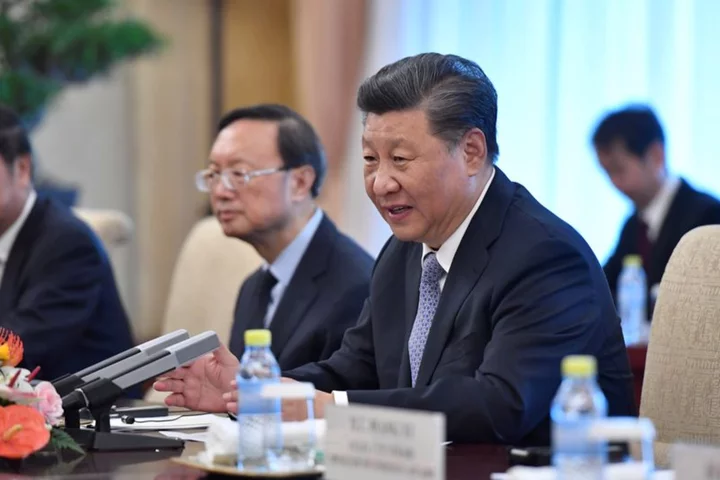By Norihiko Shirouzu
AUSTIN, Texas If you can't beat them, buy them.
For years, a little-known company called Tooling & Equipment International (TEI) has helped Tesla push back the frontiers of "gigacasting", the process it pioneered to cast large body parts for cars in one piece to save time and money.
Until 2023, that is. TEI is now part of General Motors after agreeing a deal that may have flown under the radar but is a key part of the U.S. automaker's strategy to make up ground on Tesla, four people familiar with the transaction said.
By snapping up a specialist in sand casting techniques that accelerated the development of Tesla's gigacasting molds and allowed it to cast more complex components, GM has jump-started its own push to make cars more cheaply and efficiently at a time when Tesla is racing to roll out a $25,000 EV, the people said.
With TEI gone, Tesla is leaning more heavily on three other casting specialists it has used in Britain, Germany and Japan to develop the huge molds needed for the millions of cheaper EVs it plans to make in the coming decade, the four people said.
At the same time, Tesla is scrambling to find another sand casting specialist to fill the role TEI performed, or even develop such crucial expertise in-house to cut its reliance on outside suppliers, the people said.
"General Motors acquired Tooling & Equipment International (TEI) to bolster its portfolio of innovations and secure access to unique casting technology," GM said in a statement to Reuters in response to questions for this story.
Tesla and TEI President Oliver Johnson did not respond to requests for comment.
Like GM, a host of automakers from Ford to Hyundai to Toyota are trying to ape Tesla's gigacasting know-how to match its design and manufacturing efficiency and avoid being undercut on the showroom floor.
Gigacasting is core to Tesla's "unboxed" manufacturing strategy unveiled by Chief Executive Elon Musk in March, which he hopes will slash the assembly costs of the next generation of cars by half.
The strategy hinges on producing the structural platform and subframes of a car in one piece using gigacasting and then snapping it together at the end with the other parts of the vehicle being made in parallel.
That gigacasting know-how, which uses casts made out of industrial sand with 3D printing, has been made possible in part by TEI along with the three other suppliers Tesla has been using.
CELESTIQ CASTINGS
Reuters has reported that the work of these four firms has been a key reason why Tesla can now develop a car from the ground up in 18 to 24 months, and do so economically, while most rivals can currently take anywhere from three to four years.
The specialists use sand casting in a process called rapid prototyping to help validate Tesla's designs and engineering specifications for its giant molds quickly and cheaply.
According to all four sources, TEI began helping Tesla around 2017 to develop the Model Y and is considered in the industry to be one of the world's top sand casting specialists.
Since then, TEI has been involved in gigacasting mold prototyping for Tesla's Model 3, Cybertruck and its heavy-duty Semi truck, according to two of the sources.
When TEI's Johnson put the company up for sale last year, GM would have had a good idea about what gigacasting know-how it might get its hands on.
GM's realization, the four sources said, certainly came when it conducted due diligence and was probably well before that as it had turned to TEI around 2021 to test and produce some underbody castings for its luxury $340,000 Cadillac Celestiq EV, which is due to hit showrooms next year.
As part of that program, GM signed a guaranteed, long-term contact and TEI invested in a new dedicated production line for the Celestiq at its base in Livonia, a 25-minute drive from GM's Detroit headquarters, one of the sources said.
"Bringing TEI into the GM enterprise builds on decades of the company's own casting experience and provides a competitive advantage with strategic castings for future low volume products like the Cadillac Celestiq," GM said in its statement.
TEI won the 2023 Casting of the Year award from the American Foundry Society for those Celestiq castings.
It formally became part of GM's Global Manufacturing division, which oversees all of GM's automobile and parts manufacturing operations, on July 1, according to one of the sources with direct knowledge.
"TEI will remain its own business entity with GM as its parent company," GM said.
Two of the sources with direct knowledge said GM paid less than $100 million for TEI, with one of them estimating it paid $80 million at the most. Reuters was unable to determine whether Tesla was one of the several companies that bid for TEI.
FRONT ROW SEAT
While Tesla has leapt ahead of rivals when it comes to manufacturing techniques, and appears to be putting more distance between it and the rest of the auto industry, the TEI deal has given GM a front row view of how Tesla honed its gigacasting expertise.
TEI and others make test molds out of industrial sand. Using a digital design file, 3D printers known as binder jets build a sand mold that can cast molten alloys.
Among key benefits of this method are that a sand mold can be printed quickly, and then reprinted multiple times at a minimal cost to tweak and adjust mold designs.
TEI and the three other specialists have been particularly important for Tesla in coming up with new alloys to be used in sand casts, as well as techniques for heat-treating the large metal body parts once they've been molded to improve their quality, Reuters has reported.
James Womack, a former research director at the Massachusetts Institute of Technology, believes Musk's new manufacturing initiatives have come as a shock to the legacy auto industry "shaking up everyone else".
"It even woke up Toyota - the industry's current very best in manufacturing - to embrace gigacasting and other innovations from Tesla," said Womack, co-author of "The Machine That Changed The World", the 1990 book about Toyota's lean production system.
Womack believes the competition to achieve even greater efficiency is far from over.
"Gigacasting and unboxed are worthy of experiments, but cutting edge endeavors almost always take more time than initially projected to reach maturity and some experiments will fail," said Womack.
(Editing by David Clarke)









